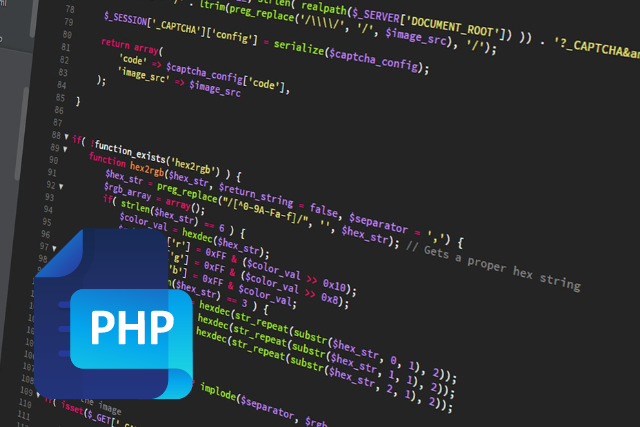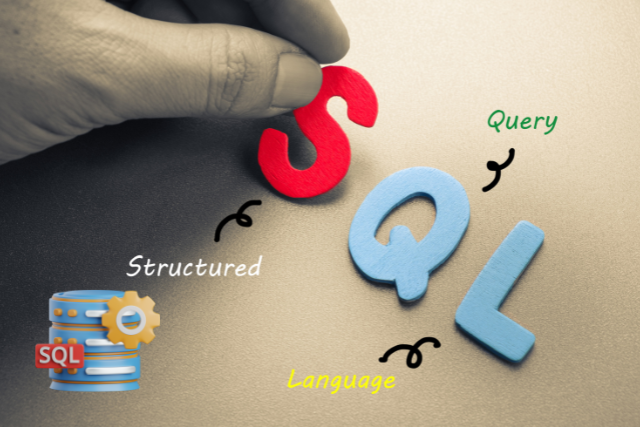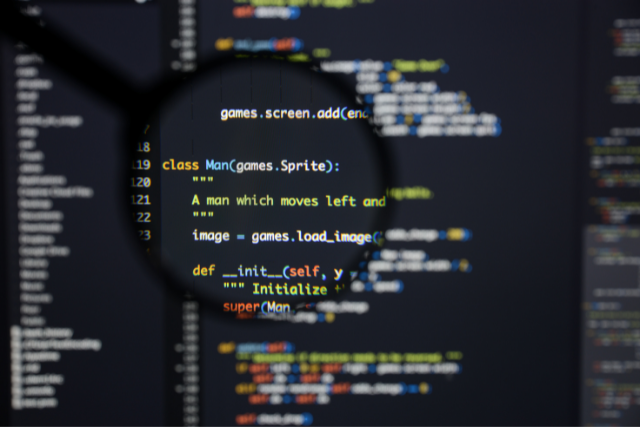MATLAB engineers are crucial in various industries because they can use MATLAB for data analysis, algorithm development, modelling, and simulation. This role requires a strong understanding of the software and the specific domain in which it is applied, such as engineering, finance, or science.
Below is a comprehensive guide to interview questions that can help you evaluate candidates for a MATLAB engineer position.
Essential Skills and Competencies for a MATLAB Engineer
MATLAB engineers must possess a blend of technical skills and domain knowledge. They should be proficient in MATLAB programming, have a solid understanding of mathematical and engineering principles, and be capable of solving complex problems.
In addition, familiarity with toolboxes relevant to their field, such as Simulink for control systems or Signal Processing Toolbox, can be essential.
Here are some of the critical areas to focus on when interviewing candidates for this role:
- MATLAB Programming Proficiency: Candidates should demonstrate a strong grasp of MATLAB’s syntax, functions, and advanced features.
- Algorithm Development: The ability to design, implement, and optimize algorithms is crucial.
- Data Analysis and Visualization: Candidates should be able to handle large datasets, perform statistical analysis, and create visualizations to present their findings.
- Domain-Specific Knowledge: Depending on the industry, candidates may need specialized knowledge in control systems, signal processing, or financial modelling.
- Problem-Solving Skills: Strong analytical skills and the ability to troubleshoot and resolve issues are essential.
- Software Integration and Deployment: Experience with integrating MATLAB with other systems and deploying applications is beneficial.
40 Common Interview Questions for MATLAB Engineers
1. Can you explain your experience with MATLAB?
Answer: With over five years of experience using MATLAB for various applications, including data analysis, algorithm development, and simulation, I have developed models, analyzed large datasets, and created custom algorithms tailored to specific project requirements.
2. What are some key features of MATLAB that you frequently use?
Answer: Key features frequently used include MATLAB’s powerful matrix operations, advanced plotting capabilities, built-in functions for statistical analysis, and toolboxes like Simulink for modelling and simulation. The debugging and profiling tools are also often utilized to optimize code.
3. How do you approach debugging in MATLAB?
Answer: The debugging process starts with using built-in tools, such as setting breakpoints and stepping through the code to identify where the issue occurs. Additionally, disp and fprintf functions are used to print variable values at different stages, and the MATLAB profiler helps identify performance bottlenecks.
4. Can you describe a project where you used MATLAB for data analysis?
Answer: In a recent project, MATLAB was used to analyze sensor data collected from manufacturing processes. Data was cleaned and preprocessed, statistical analysis was performed to identify trends and anomalies, and visualizations were developed to present the findings to the engineering team. This helped optimize the process and reduce defects.
5. How do you optimize MATLAB code for performance?
Answer: Optimizing MATLAB code involves preallocating arrays, using vectorized operations instead of loops, and minimizing the use of global variables. Taking advantage of built-in functions that are optimized for performance and profiling the code helps identify bottlenecks for further optimization.
6. What is Simulink, and how have you used it?
Answer: Simulink is a MATLAB-based graphical programming environment for modeling, simulating, and analyzing dynamic systems. It has been used to model control systems, simulate their behavior under different conditions, and test control algorithms. It allows for visual representation and real-time simulation, which is invaluable for design and testing.
7. How do you handle large datasets in MATLAB?
Answer: Handling large datasets involves using MATLAB’s data handling capabilities, such as the datastore and tall arrays, which allow the processing of data in chunks. Memory-efficient data types are utilized, and data is loaded and processed incrementally to avoid memory overflow. MATLAB’s built-in data analysis and visualization functions are optimized for efficiently handling large datasets.
8. Explain how you would develop an algorithm in MATLAB.
Answer: Developing an algorithm in MATLAB involves defining the problem, designing it, implementing it in MATLAB, and testing it with various datasets. The problem is broken down into smaller components, pseudocode is written and then translated into MATLAB code. The algorithm is iteratively tested and refined to ensure accuracy and efficiency.
9. What are MATLAB toolboxes, and which ones have you used?
Answer: MATLAB toolboxes are collections of specialized functions and tools for specific applications. Several toolboxes have been used, including the Signal Processing Toolbox, Image Processing Toolbox, Control System Toolbox, and Financial Toolbox. These toolboxes provide pre-built functions and algorithms that accelerate development and analysis.
10. How do you ensure the accuracy and reliability of your MATLAB code?
Answer: Ensuring accuracy and reliability involves writing comprehensive test cases, performing code reviews, and validating results against known benchmarks or alternative methods. MATLAB’s unit testing framework automates testing and catches errors early. Continuous testing and validation are key to maintaining code quality.
11. Describe when you had to integrate MATLAB with another software.
Answer: In a previous role, MATLAB was integrated with a Python-based data processing pipeline. The MATLAB Engine API for Python was used, which allowed MATLAB functions to be called from Python scripts and data exchanged between the two environments. This integration enabled MATLAB to leverage its advanced analysis capabilities within a broader data processing workflow.
12. What are M-files, and how do you use them?
Answer: M-files are script or function files written in MATLAB. Script M-files contain a sequence of MATLAB commands executed in order, while function M-files define reusable functions with inputs and outputs. M-files organize code into modular, reusable components, making it easier to manage and maintain.
13. How do you handle errors and exceptions in MATLAB?
Answer: Errors and exceptions are handled using MATLAB’s try-catch blocks. The try block contains the code that might generate an error, and the catch block handles the error if it occurs. This approach allows for managing exceptions gracefully and providing meaningful error messages or fallback actions.
14. Explain the use of fft in MATLAB.
Answer: The fft function in MATLAB computes the Fast Fourier Transform of a signal, which is used to analyze the frequency components of time-domain data. fft is used to perform spectral analysis, identify dominant frequencies, and filter signals in various signal-processing applications.
15. What is the difference between plot and subplot in MATLAB?
Answer: The plot function creates a single plot in the current figure window, while subplot allows for multiple plots in a single figure window, arranged in a grid. subplot is used when multiple datasets need to be compared or when different aspects of the same data need to be visualized side by side.
16. How do you implement a custom function in MATLAB?
Answer: To implement a custom function in MATLAB, a new M-file is created with the function definition, including the function name, inputs, and outputs. The function body contains the code that performs the desired operations. The file is saved with a .m extension and the function is called from other scripts or the command window.
17. Describe your experience with MATLAB’s GUI development tools.
Answer: Experience with MATLAB’s GUI development tools includes using GUIDE and App Designer to create custom graphical user interfaces. These tools allow designing interactive applications with buttons, sliders, and plots, making it easier for users to interact with the underlying MATLAB code.
18. What are cell arrays, and when would you use them?
Answer: Cell arrays are data structures in MATLAB that can hold different types of data in each cell, such as strings, numbers, or other arrays. Cell arrays are used when heterogeneous data needs to be stored or when the size and type of the data elements vary.
19. How do you perform matrix operations in MATLAB?
Answer: MATLAB is designed for matrix operations, with built-in functions for matrix addition, multiplication, inversion, and decomposition. These functions are used extensively to perform linear algebra operations, solve systems of equations, and manipulate data stored in matrix form.
20. What is the role of the hold on and hold off commands in MATLAB?
Answer: The hold on command allows multiple plots to be drawn on the same axes without erasing the previous plots, while hold off resets the behavior to the default, where each new plot erases the previous one. These commands are used when multiple datasets need to be overlaid on a single plot for comparison.
21. Explain the use of polyfit and polyval functions.
Answer: The polyfit function fits a polynomial to a set of data points by finding the polynomial coefficients, while polyval evaluates the polynomial at specified points. These functions are used for curve fitting and interpolation to model data trends and make predictions.
22. How do you perform image processing in MATLAB?
Answer: For image processing, the Image Processing Toolbox is used, which provides functions for reading, writing, and manipulating images. Common tasks include filtering, edge detection, segmentation, and morphological operations. Functions like imread, imshow, imfilter, and edge are used to process and analyze images.
23. Describe a time when you optimized an algorithm for better performance in MATLAB.
Answer: In a project involving real-time signal processing, an algorithm was optimized by replacing nested loops with vectorized operations, reducing redundant calculations, and using preallocated arrays. These changes significantly improved the execution speed, allowing the algorithm to run in real-time.
24. What is the use of eval and feval functions?
Answer: The eval function evaluates a string containing MATLAB expressions, while feval calls a function specified by a string or function handle. eval is used for dynamic expression evaluation and feval for executing functions when their names are determined at runtime.
25. How do you handle missing data in MATLAB?
Answer: Missing data is handled using functions like isnan to identify and fillmissing to fill in missing values with interpolated values, means, or other appropriate methods. These tools help ensure data integrity and accuracy in analysis.
26. Explain the difference between scripts and functions in MATLAB.
Answer: Scripts are simple M-files that execute a sequence of commands and share the workspace with the base MATLAB environment. Functions are more modular, with their own local workspaces, and can accept inputs and return outputs. Functions provide better code organization and reusability.
27. How do you create and manipulate structures in MATLAB?
Answer: Structures in MATLAB are data types that group related data using named fields. Structures are created using the struct function and fields are accessed using dot notation. Structures are useful for organizing complex data sets with mixed data types.
28. What are handle graphics in MATLAB?
Answer: Handle graphics are MATLAB’s object-oriented graphics system, where graphical objects like figures, axes, and plots have unique handles that can be used to query and modify their properties. Handle graphics are used to customize the appearance and behavior of plots and GUIs.
29. How do you use the save and load functions?
Answer: The save function saves variables to a MAT-file, and the load function loads variables from a MAT-file into the workspace. These functions are used to store and retrieve data between MATLAB sessions, ensuring data persistence and easy sharing.
30. What is the role of legend and title functions in MATLAB?
Answer: The legend function adds a legend to a plot, describing each plotted data series, while the title function adds a title to the plot. These functions enhance the readability and interpretability of plots, making it easier to understand the presented data.
31. How do you use logical indexing in MATLAB?
Answer: Logical indexing involves using logical arrays to index and manipulate elements of other arrays. This technique is used to select and modify subsets of data based on conditions, such as extracting elements greater than a certain value or setting specific elements to zero.
32. Describe your experience with MATLAB’s Parallel Computing Toolbox.
Answer: The Parallel Computing Toolbox has been used to speed up computations by parallelizing tasks across multiple CPU cores or GPUs. Functions like parfor and spmd allow distributing work efficiently, significantly reducing computation times for large-scale problems.
33. What are persistent variables, and how do you use them?
Answer: Persistent variables retain their values between function calls without being global. They are used in functions where state information needs to be maintained across multiple invocations, such as in recursive algorithms or cumulative calculations.
34. How do you document your MATLAB code?
Answer: MATLAB code is documented using comments, which are added using the % symbol for single-line comments and %{ %} for block comments. The help and doc functions are also used to create custom help documentation for functions, ensuring that the code is well-documented and easy to understand.
35. Explain the use of the fminsearch function.
Answer: The fminsearch function finds the minimum of an unconstrained multivariable function using the Nelder-Mead simplex algorithm. It is used for optimization problems where an objective function needs to be minimized without constraints.
36. How do you handle version control for your MATLAB projects?
Answer: Version control systems like Git are used to manage changes to MATLAB code. Changes are committed regularly, branches are created for new features or experiments, and merged back into the main branch once tested. This approach ensures tracking changes, collaborating with others, and reverting to previous versions if needed.
37. What is the use of bsxfun in MATLAB?
Answer: The bsxfun function applies element-wise operations to arrays with singleton expansion, enabling efficient computation without explicit looping. bsxfun is used to perform operations like addition, multiplication, and logical comparisons on arrays of different sizes.
38. Describe a situation where you had to troubleshoot a complex MATLAB code.
Answer: In a project involving a complex simulation model, inconsistent simulation results were encountered. MATLAB’s debugging tools were used to step through the code, inspect intermediate variables, and identify an incorrect parameter initialization. Correcting this resolved the issue and ensured accurate simulation results.
39. How do you use MATLAB for machine learning applications?
Answer: For machine learning applications, MATLAB’s Statistics and Machine Learning Toolbox is used, which provides functions for data preprocessing, model training, and evaluation. Classification, regression, and clustering algorithms are implemented, and tools like the Classification Learner and Regression Learner apps are used for model development and comparison.
40. How are you updated with the latest MATLAB features and best practices?
Answer: Staying updated involves regularly reviewing MATLAB’s official documentation, attending webinars and training sessions offered by MathWorks, participating in MATLAB user communities, and following relevant forums and blogs. Continuous learning helps keep up with new features, toolboxes, and best practices.
Conclusion
Interviewing for a MATLAB engineer position requires a focus on both technical proficiency and domain-specific knowledge. By asking detailed questions about candidates’ experiences, skills, and problem-solving approaches, you can identify those who are well-equipped to leverage MATLAB for your organization’s needs.
The provided questions and answers offer a comprehensive guide to assess a candidate’s expertise and suitability for the role.







